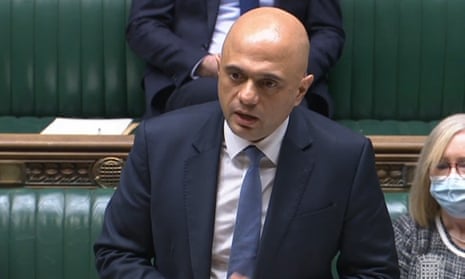There have been many changes to isolation rules in England but the science of how Covid-19 spreads has remained the same. During the first waves of the pandemic, people were required to isolate for 10 days after testing positive. This was subsequently changed to seven days, so long as the person had a negative lateral flow test on days six and seven. Although data is still being collected on the impact of this change, the isolation period has been cut again: today, the health secretary, Sajid Javid, announced that people with Covid will only need to isolate for five days, so long as they show two negative lateral flow tests by day six.
I’m deeply concerned about this. There is little scientific evidence to justify these reduced measures. Yes, some would argue that Omicron is mild compared to other variants, and does not result in massive hospitalisations. But a comprehensive review of research into 5,340 infected people around the world showed that the times at which these people were shedding the most virus, and were therefore most infectious to others, was between days three to six. The amount of virus each person shedded tailed off at days seven to nine. By day 10, no viable virus could be recovered from their respiratory tracts.
This was why scientists originally recommended a 10-day period of isolation. A limited number of studies have suggested that people who are asymptomatic may shed the virus for a slightly shorter period, but decisions on national policy should be based on all infections, not just a subsection of asymptomatic cases.
The government’s previous decision to cut isolation to seven days so long as a person had two negative lateral flow tests was a compromise, made when there was significant pressure to keep the country going while slowing the spread of Omicron. But ending isolation on day five will mean that some people come out of isolation during the peak of viral shedding.
Two negative lateral flows are still required for a person to leave isolation after five days. These tests are a quick, user-friendly and practical way of gauging infectiousness, but they aren’t as accurate as PCR tests. Taking a swab sample correctly is crucial to the test results. Pressures such as a lack of paid sick leave may tempt some users to report their test results as negative. In laboratory settings, lateral flow tests have been shown to be accurate, with very few false positives, but they are not as sensitive as PCR tests, meaning that some results might falsely appear negative, particularly at the start and end of the infectious period.
Despite these limitations, lateral flow tests are still one of the best ways to reduce community transmission, so long as they’re used correctly. Reports that free lateral flow tests may be phased out in the coming months are concerning – it’s vital that they continue to be offered for free. Making people pay for lateral flows would lead to a rapid decline in testing.
In cutting the isolation period again, the government seems to be more concerned with the impact of absenteeism in workplaces, particularly in essential services and schools, than with reducing the spread of Omicron. Releasing infected people back into the community when they may still be shedding the virus and therefore infecting others is both foolhardy and dangerous. I strongly urge our policymakers to look at the scientific data and draw sensible conclusions from this. It’s only by following the science of how Covid-19 spreads that we can keep people safe as we go about our daily lives.
Sally Cutler is professor in medical microbiology at the University of East London
